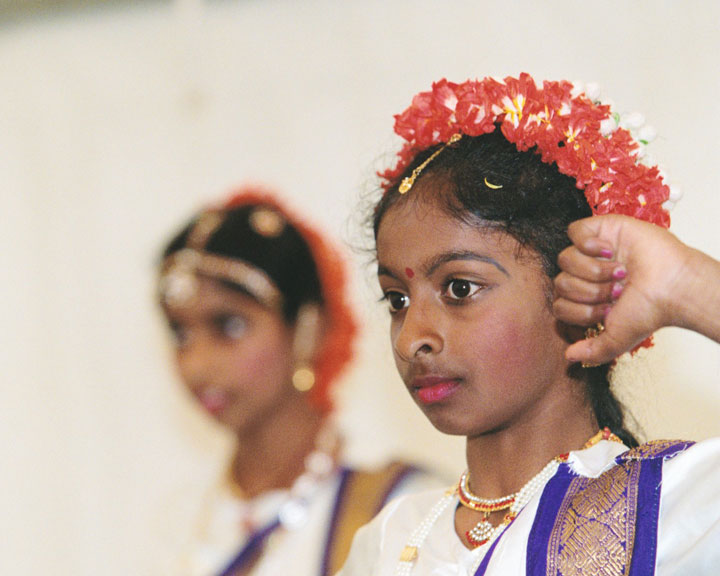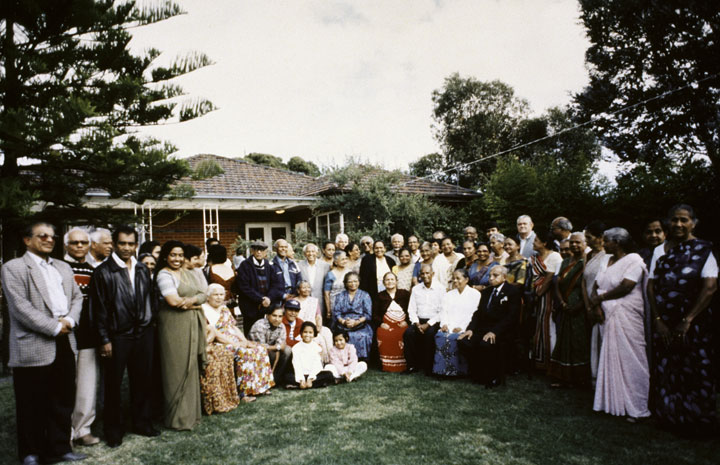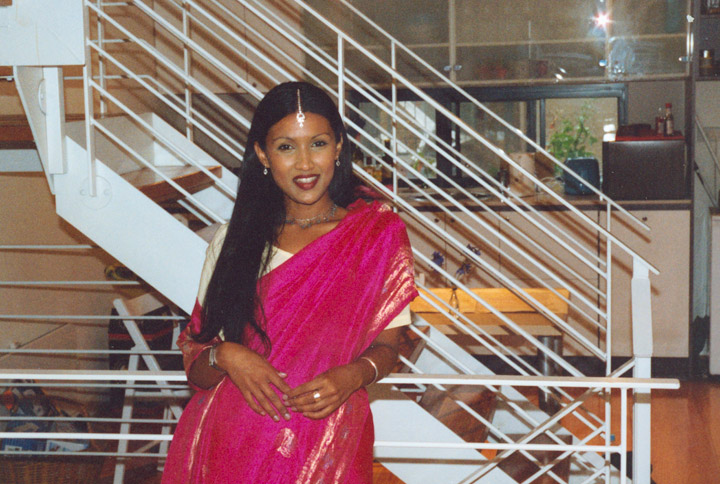Immigration History from Sri Lanka (Sinhalese) to Victoria
ශ්රී ලාංකිකයන් (සිලනීස් යනුවෙන් ඉංග්රීසීන් විසින් කලින් හඳුන්වන ලද) වික්ටෝරියාවේ පදිංචිවීම ඇරඹුණේ 19 වන සියවසේ සිටය. 1871 දී පැවැති ජන සංගනනයේ දී ඔවුන් ප්රථම වතාවට ගනන් ගැනී ඇති අතර, එහිදී 58 දෙනෙකු සිටි බවට වාර්තා වී ඇත. ඕස්ට්රේලියාවේ අනෙකුත් ප්රදේශවල පදිංචිවූ ශ්රී ලාංකිකයන් මෙන්ම, මොවුන්ද පෑමිණෙන්නට ඇත්තේ සමහරවිට කම්කරුවන් ලෙස හෝ රත්රන් ගවේෂණයේ යෙදෙන්නන් ලෙස විය හැක.
මෙම ප්රජාව 20 වෙනි සියවසේ සෑහෙන කලක් ගතවනතුරුම සුළු පිරිසක් වශයෙන් පැවැති අතර, 1933 දී 130 දෙනෙකු සිටි බවට වාර්තා වී ඇත. මොවුන්ගෙන් වැඩි පිරිස බර්ගර් ජාතිකයෝ වූහ (යුරෝපීය අධිරාජ්යවාදීන්ගෙන් පැවැත එන්නන්). සුදු ඕස්ට්රේලියානු පිළිවෙත යටතේ පදිංචිය සඳහා පිළිගනු ලැබුවේ යුරෝපීය සම්භවයක් ඇති අය පමණය.
දෙවන ලෝක යුද්ධයෙන් පසු ප්රජාව වර්ධනය වීමට පටන්ගත්තේය. 1948 දී ශ්රී ලංකාවට එංගලන්තයෙන් නිදහස ලැබුණු අතර, වඩ වඩාත් බර්ගර් ජාතිකයෝ, ඕස්ට්රේලියාවද ඇතුළුව, ඉංග්රීසි කතා කරන රටවලට සංක්රමණය වීමට පටන් ගත්හ. 1966 වන විට, වික්ටෝරියාවේ සිටි ශ්රී ලාංකික ප්රජාව 3,126 දක්වා වර්ධනය වී තිබුණු අතර, මින් වැඩි පිරිස බර්ගර් ජාතිකයෝ වූහ. 1973 දී සුදු ඕස්ට්රේලියානු පිළිවෙත අහෝසි වීමත් සමඟ, වික්ටෝරියාවේ සිංහල සහ දෙමළ පදිංචිකරුවන්ගේ සංඛ්යාවේ ඉහල යාමක් දක්නට ලැබිණ. 1976 වන විට, වික්ටෝරියානුවන් 9,061 දෙනෙක් ශ්රී ලංකාවේ උපත ලද අය වූහ.
1983 දී ශ්රී ලංකාවේ ඇතිවූ ජනවාර්ගික අර්බුදය හේතුවෙන්, මානව හිමිකම් පිළිබඳ විශේෂ වැඩසටහන යටතේ, සංක්රමණිකයින් සෑහෙන සංඛ්යාවක් මෙරටට බාර ගැනින. අනතුරුව, පවුලේ අය එක් කිරීමේ වැඩසටහන යටෙත් හෝ, නිපුන හෝ ස්වාධීන සංක්රමණිකයන් ලෙස ශ්රී ලංකාවේ උපත ලද අය මෙරටට පැමිණයහ.
2011 දී පැවැති සංගනනයේදී පුද්ගලයන් 43,991 ක් වාර්තා කරමින්, වික්ටෝරියාවේ වෙසෙන විශාලත්වය අතින් අට වන ස්ථානයේ සිටින සංක්රමණික කණ්ඩායම බවට අද වන විට ශ්රී ලාංකිකයින් පත්ව ඇත. ප්රජාව සංස්කෘතිකමය වශයෙන් නානාවිධ වන අතර, නිවසේ කතා කරන භාෂාව අනුව මෙය ප්රකට වේ: 53% ක් සිංහල භාෂාවද, 16% ක් දෙමළ භාෂාවද, අනෙකුත් බොහෝ දෙනෙක් ඉංග්රීසි භාෂාවද කතා තරති. ආගම් පිළිබඳ නානාවිධත්වයද මේ හා සමාන ස්වරූපයක් ගනී: 42% ක් බෞද්ධ, 12% ක් හින්දු සහ 40% ක් ක්රිස්තියානි.
වික්ටෝරියාවේ වෙසෙන ශ්රී ලංකාවේ උපත ලද අයගෙන් 37% ක් තෘතීය අධ්යාපනය ලබා ඇති අතර ඔවුහු කළමණාකරුවන් සහ වෘත්තිකයන් ලෙසද, 25% ක් ලිපිකාර, වෙළෙඳ සහ සේවාවන්හිද, තවත් බොහෝ දෙනෙක් කර්මාන්ත, නිෂ්පාදන සහ ප්රවාහන අංශයන්හිද රැකියා කරති. ප්රජාව වැඩි වශයෙන් ජීවත්වන්නේ මෙල්බර්න් නගරෙයන් පිටත, ඩැන්ඩිනොන් නගරයද ඇතුළුව, ගිනිකොණදිග ප්රදේශයන්හි වන අතර, සංස්කෘතික සහ ආගමික සංවිධාන රැසක සේවය ඔවුන් හට හිමිවේ. ප්රජා කටයුතු අතරට, නිදහස ලැබූ දිනය වන පෙබරවාරි 4 වෙනිදා සමරමින් සෑම වසරකම පවත්වන සංස්කෘතික සංදර්ශනද, සිංහල සහ හින්දු අළුත් අවුරුදු උත්සවද ඇතුලත්වේ.




